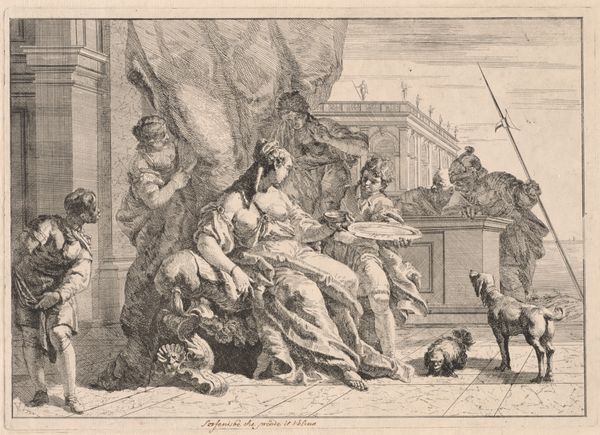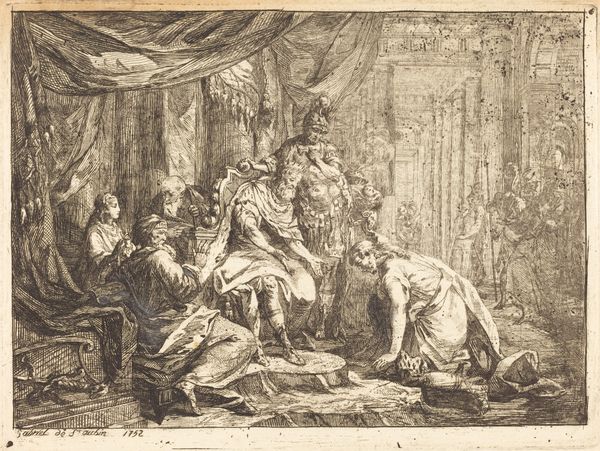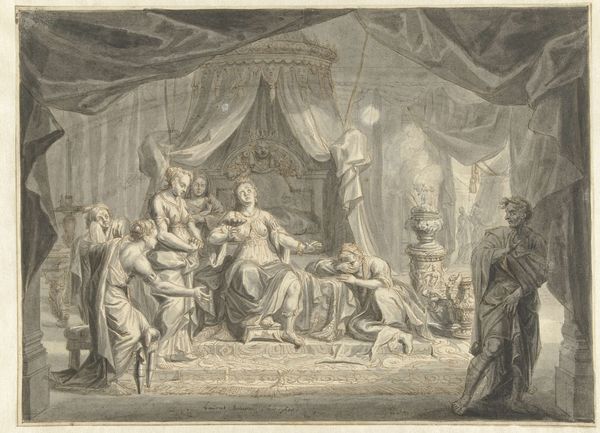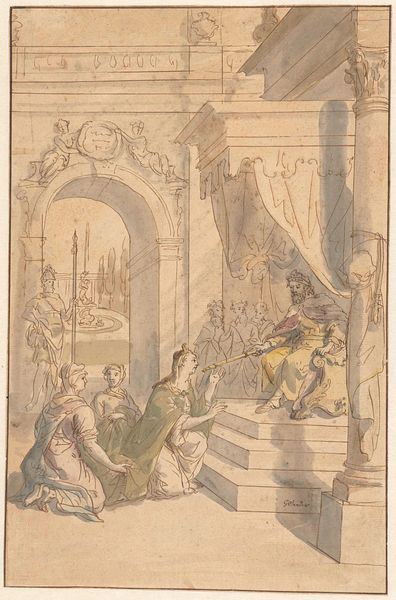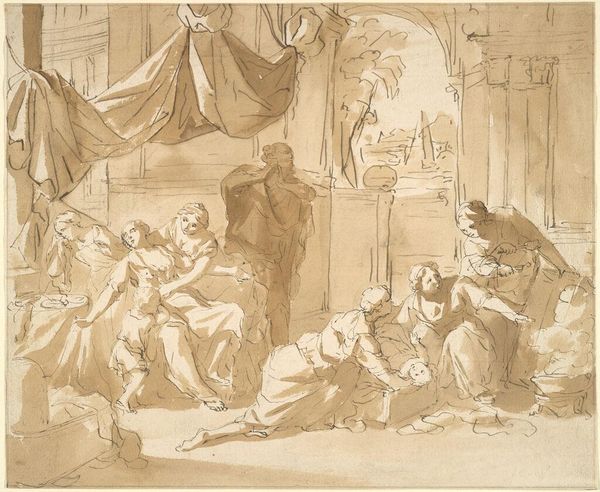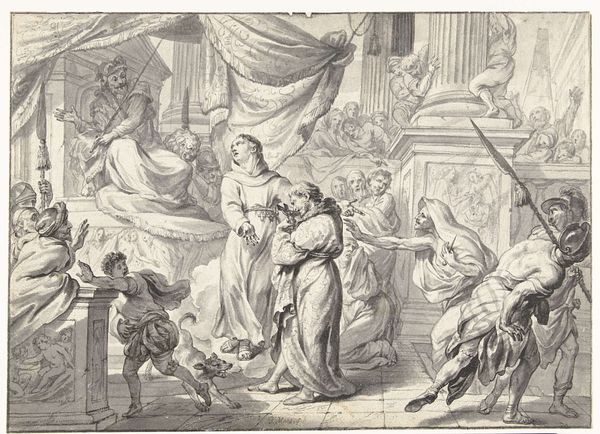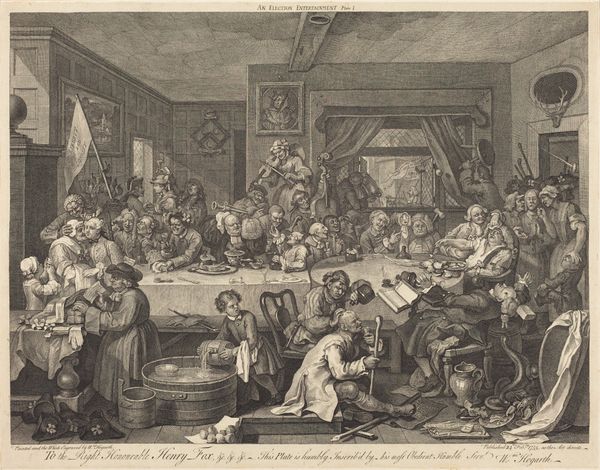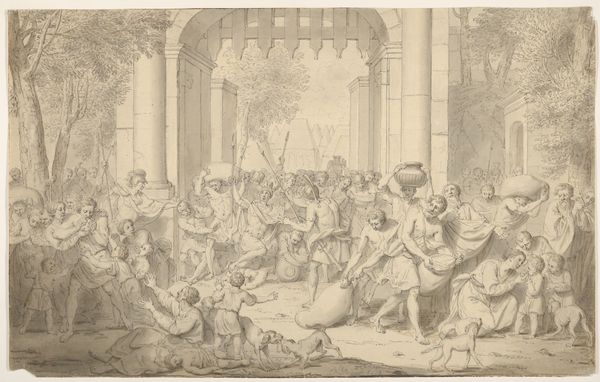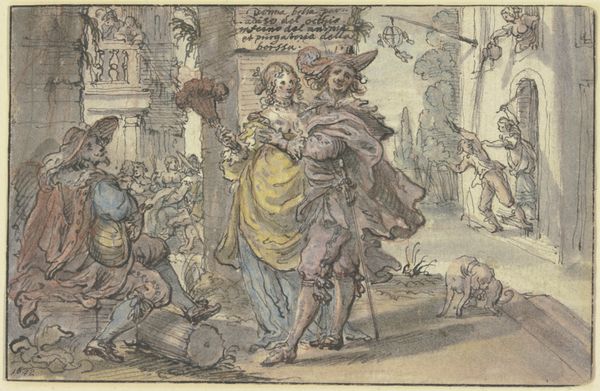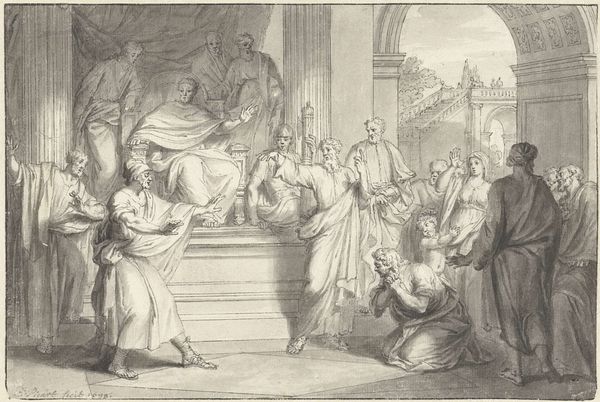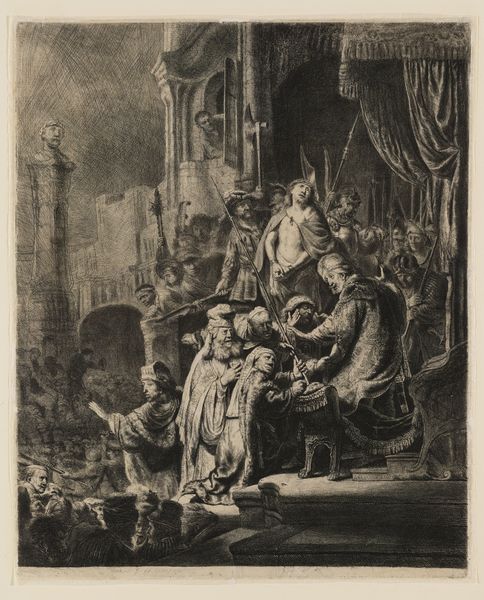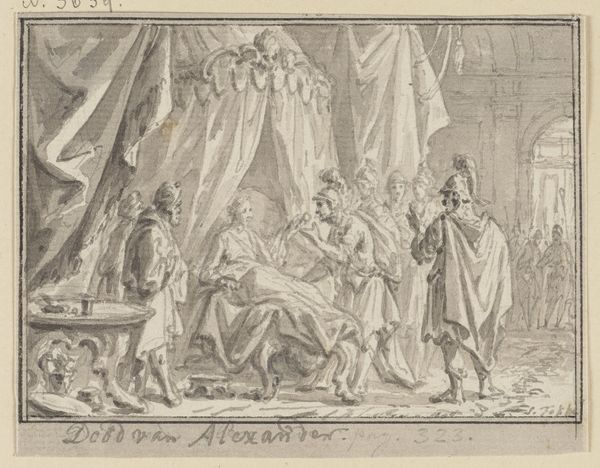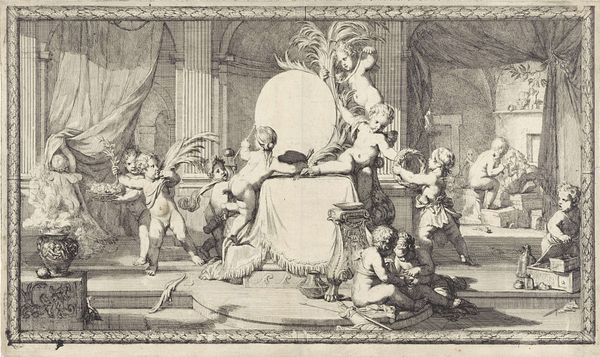
painting, watercolor
#
portrait
#
neoclacissism
#
painting
#
figuration
#
watercolor
#
watercolour illustration
#
genre-painting
#
history-painting
#
academic-art
#
watercolor
Dimensions: height 355 mm, width 490 mm
Copyright: Rijks Museum: Open Domain
Curator: Right, let's delve into this watercolor. What springs to mind when you look at Jean Grandjean's "Antiochus tries to hide his love for his mother Stratonice" from 1775? Editor: A bit of a theatrical scene, isn’t it? Like a frozen moment from a play. Everyone’s striking a pose, full of unspoken tension. The muted colours contribute to a subdued, almost dreamlike atmosphere. Curator: Exactly! Grandjean was working within the Neoclassical style, a movement that, politically, often served to legitimize power. This piece isn't just a pretty picture; it’s drenched in social context. Academic art during this period favored historical subjects, and Grandjean draws from Plutarch. Antiochus falls ill with lovesickness for his stepmother Stratonice, but suppresses his feelings to honor his father, King Seleucus. Editor: Ah, a torrid tale rendered in pale pastels! It’s interesting how Grandjean captures this supposed internal turmoil. Antiochus looks rather swoony and dramatically unwell. And the stepmother – her expression is ambiguous, isn’t it? Like she's maybe flattered by his unrequited affections. Curator: I think Grandjean cleverly employs the genre painting aesthetic to explore and reflect moral and philosophical ideas related to the representation of power at that time. Look how his personal anxieties about emotional health, especially within political contexts, are woven into a dramatic history painting. What a conflicted portrayal! Editor: Indeed, conflicted is the perfect word. The clarity and coolness of the colours against such an intense narrative... it feels contradictory, almost as if he's trying to put a lid on the bubbling emotional turmoil beneath the surface. A bit like Antiochus himself, perhaps! Curator: Well, I think we can say with some certainty that Grandjean offers us a visually intriguing take on forbidden desire and social obligation. The piece offers not just a view into Neoclassical aesthetics, but the tangled politics of imagery in that era. Editor: Definitely. A delicate dance between restraint and emotional chaos—a little soap opera hidden in a museum piece! It prompts you to think about those hidden struggles within societal structures.
Comments
No comments
Be the first to comment and join the conversation on the ultimate creative platform.
